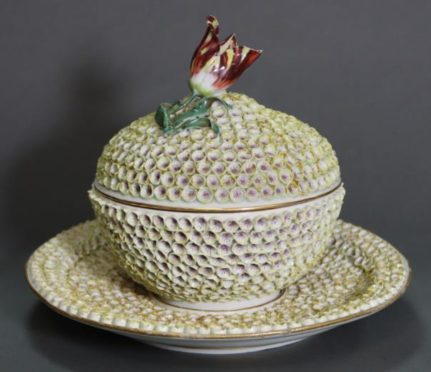A now sadly-departed neighbour had a sublime collection, with paintings by notable artists, grand clocks and fine Georgian furniture. I learned so much from her.
She always bemoaned, however, that the pair of polychrome Chelsea cockerels in a cabinet – each about 10 inches in height – were ‘merely’ gold anchor period and, sadly, she mused, not ‘red anchor’.
This befuddled me at the time, but of course her comments referred to the early marks on some of the most sought-after of today’s collectables – early Chelsea porcelain.
The Chelsea factory was founded in 1743 and was the first important porcelain manufactory in England. It had three principal periods during which it produced objects of the highest quality.
An incised triangle mark was used for a few years after the factory opened, and most wares were white at this time.
The red anchor period which followed lasted just a handful of years, from 1752 to 1756. During this period, the paste and glaze were modified to produce a slightly opaque surface on which to paint services and figurines. These pieces are rare.
The gold anchor phase ran from 1756 to 1769, by which time the Chelsea anchors were beginning to be copied by other major factories, including Bow and Derby.
Aldridges of Bath sold on July 27 a Chelsea bowl, cover and stand inscribed with the gold anchor mark.
The 6in x 6 in bowl, dating to c1760, had a finely painted bouquet to the interior, with its domed cover topped by a tulip finial. The three pieces were beautifully covered with tiny flower-heads.
The bowl was held back by chips and hairline cracks, including a riveted repair, but still took £470.










